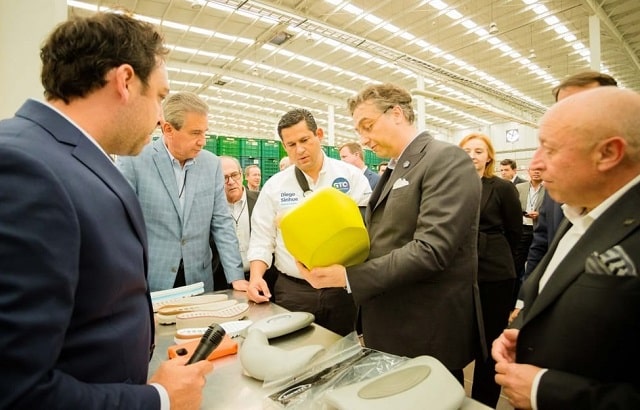
As a manufacturer, opting to use foam as your product’s material of choice. Lightweight, affordable, durable and easy to clean, foam offers a myriad of great properties, including being impervious to water, allowing the development of complex shapes, and providing a wide of color choices, contrasting surface textures, high-quality finishes and comfort. Foam is particularly conducive for products in the spa, pool, watersports, medical and other applications.
But did you know that not all foam-based production processes are created equally? Let’s compare the benefits that foam injection molding, using XL EXTRALIGHT® technology foam outmatches polyurethane foam injection molding and polyurethane compression molding. XL EXTRALIGHT® is manufactured by Foam Creations in North America.
Foam Injection Molding Versus Polyurethane Foam Injection Molding
Polyurethane foam injection molding uses open-cell foam, which means the foam has small cells that are not completely closed. On the other hand, XL EXTRALIGHT® foam is made of closed cells, which are entirely sealed off.
The main difference between open-cell and closed-cell foams is that closed-cell foams are firmer, while open-cell foams are less firm, due to the fact that the open cells are filled with air, which in turn impacts the way the foam performs. Unfortunately, with products made with polyurethane open-cell foam, if the outer layer of the cells are destroyed or damaged, water and humidity can enter and the risk of bacteria developing is high. Alternatively, closed-cell foams, like XL EXTRALIGHT®, guarantees that products are 100% waterproof and remain bacteria-free.
As a result, XL EXTRALIGHT® foam injection molding is much more conducive for products that require durability, are waterproof, or need to protect users from bacteria and humidity.
While products made from traditional polyurethane foam injection molding processes were recognized for their softness and comfort, it is important to note that manufacturers that choose foam injection molding can choose from a wide range of hardness levels for the same density. This allows them to create closed-cell-based products that are equally as comfortable as those made with open-cell foam.
Furthermore, contrary to polyurethane foam, XL EXTRALIGHT® foam injection molding, manufactured by Foam Creations, ensures no bubbles at the back of the components. The benefits of this are threefold. XL EXTRALIGHT® foam products have a better chemical resistance. They also have a nicer finish and texture. And, especially with light colors, XL EXTRALIGHT® foam doesn’t tend to yellow, which impacts the long-term look of products.
Foam Injection Molding Versus Polyurethane Compression Molding
XL EXTRALIGHT® foam injection molding also varies immensely when compared with polyurethane compression molding. In addition to the aforementioned differences, injection and compression molding are two vastly different processes.
With foam injection molding, thermoplastic materials are melted evenly and, once the polymer melt is treated, the end solution is injected into a mold to create the foam product.
During compression molding, the thermoplastic materials are melted and then placed in a machined tool that is mounted on a molding press. The mold is then closed to force the polymer solution to come into contact with the mold surface. Pressure is maintained and the material is left to cool. On most products and components, the finished product needs to be trimmed or cut before it is finished.
Due to the inherent processes, foam injection molding inevitably creates less waste in terms of the polymer solution and scraps. Also, foam injection molding offers superior mechanical properties and quality surface areas that are much more homogenous than compression molding. In the end, products made using compression molding may experience accelerated wear or changes in the surface quality in various zones. What’s more: foam injection molding affords a higher definition of logos, other brand imagery and textures—even if the textures are particularly fine or detailed.
As you can see, for many applications, XL EXTRALIGHT® technology EVA foam is the clear winner when compared with polyurethane foam injection molding and polyurethane compression molding. And remember, if you select Foam Creations as an EVA foam injection manufacturer in North America, you also benefit from fast service, just-in-time production, fast deliveries, and minimal taxes and tariffs.
Need more information about our foam injection molding approach and product insulation? Contact us today at Foam Creations for perfectly designed unique products!
